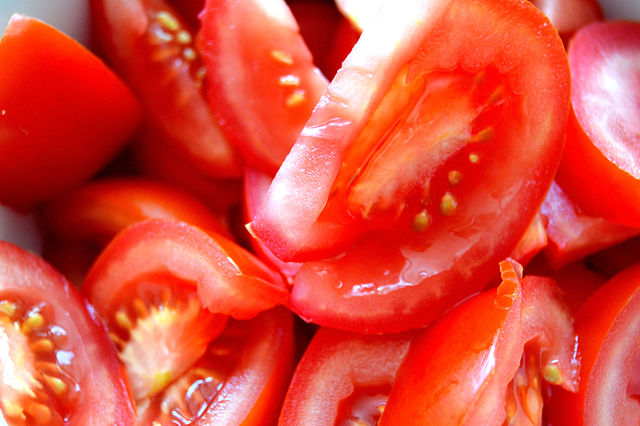Currently high tomato prices might normalize after the June 6-9, 2025 Sallah celebrations, amid falling yields in Kaduna, northwest Nigeria.
According to Rabiu Zuntu, chair of the Kaduna branch of the Tomatoes Growers and Processors Association of Nigeria (TOPAN), prices could reduce this week.
TOPAN’s Kaduna branch had earlier linked the costliness to the three-day Muslim holiday and low production.
Robust demand through intermediate festivities including Easter in April and Eid al-Adha (Sallah) in June had reinforced the surge.
Doubled Prices
On June 9, traders in the capital Abuja were selling a basketful of tomatoes from 90,000 to 100,000 naira ($58.14-64.60).
In normal times, a basket of the kitchen staple costs below 50,000 naira ($32.30), meaning the reigning prices have doubled.
Although tomatoes have grown dear in Nigeria most of 2025, their current price strength oversets expectations of a mid-year reprieve.
Such a reduction would be possible in the absence of inflation, which had elevated tomato prices at a near-similar period in July 2024.
Besides, customers speculate that the currently doubled rates are seasonal outcomes of the ongoing planting season.
50% Post-harvest Losses
While consumers blame seasonality, others are pointing a finger at post-harvest losses for the meteoric market rates.
Indeed, stakeholders attending a recent Cold Chain in Agriculture Roundtable 2025 in Lagos noted how Nigeria loses 50% of crop harvests, annually.
The Lagos conference highlighted technologies that are trying to meet smallholder storage problems such as mobile cold rooms.
It is such technologies that can help Nigeria reduce losses and cut a related dependence on tomato paste imports.
What remains next is how farmers will mitigate low production to alleviate future elevations of tomato pricing. The statistics below offer the bigger picture by exploring production in the context of prices and consumption.
Nigeria Tomato Prices, Production and Consumption Statistics
Nigeria is the 14th biggest tomato producer worldwide and the 2nd in Africa, according to the Food and Agriculture Organization (FAO). Although annual production has been upping in the five-year period ending 2023, the country has ironically been importing huge tomato paste volumes. In consumption, Nigeria was utilizing over 1.6 million tonnes of tomatoes before 2012, ranking 2nd in Africa after Egypt. With such appetite, prices change seasonally, with the country having the 69th highest tomato rates worldwide, as of 2025.
Below is a glimpse of the modest annual rise in domestic tomato production in the 2019-23 period, courtesy FAOSTAT.
| Year | Production [tonnes] |
| 2023 | 3,803,598 |
| 2022 | 3,600,784 |
| 2021 | 3,477,981 |
| 2020 | 3,390,170 |
| 2019 | 3,102,960 |
Have tomato yields in Nigeria kept up with production?
Even as Nigeria’s tomato production has been improving marginally in the 2019-23 period, productivity has been downsizing. While 2020 peaked at approximately 3,950 kg per hectare (ha), by 2023 the value had reduced to about 3,470/ha. The table below, interpreted from FAOSTAT, gives a fuller survey.
| Year | Yield [t/ha] |
| 2023 | 3.47 |
| 2022 | 3.61 |
| 2021 | 3.75 |
| 2020 | 3.95 |
| 2019 | 3.44 |
How much tomatoes do people in Nigeria eat per year?
In the 2006-2012 timeline, Nigeria annually ranked the 14th biggest tomato-consuming nation. Domestic consumption in 2012 hit 1.69 million tonnes. This is even as Egypt led Africa’s consumption at 7.24 million tonnes, according to the Helgi Library,.
How high are tomato prices in Nigeria from a world perspective?
According to price aggregator, Numbeo, Nigeria sells 1 kg of tomatoes at retail markets for an average $1.84 (2025). This puts the country’s tomatoes the 69th costliest worldwide and 3rd in Africa after those of nearby Ghana and Ivory Coast.
